

Professional teeth whitening treatments are a specialized approach to removing stains and discoloration from teeth. Unlike at-home kits that may deliver mild results, these treatments use precisely formulated whitening agents and industry-grade equipment under the supervision of dental professionals. The process is designed to make teeth several shades lighter in a safe, controlled environment. Americans seeking bright, confident smiles often turn to these professional options due to their reliability and effectiveness compared to consumer products found in stores.
Modern dental clinics in the United States typically offer a range of whitening services, each engineered for users with different needs—such as speedy results before a big event, or gradual whitening for sensitive teeth. These treatments often utilize hydrogen peroxide or carbamide peroxide in high, carefully regulated concentrations to break down tough stains on both the enamel and deeper dental layers. A typical session is tailored to a patient’s oral health profile, ensuring the best cosmetic outcome while minimizing possible discomfort from sensitivity.
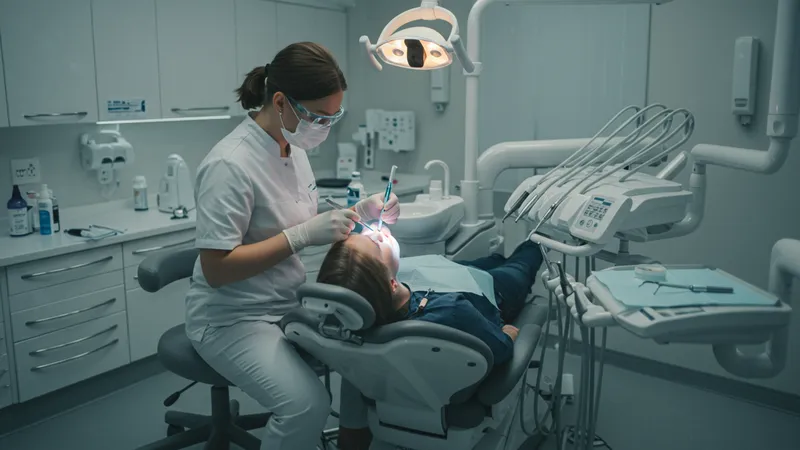
Professional teeth whitening procedures in the U.S. have grown in popularity thanks to their measurable results and speed. Compared to over-the-counter strips and trays, clinical whitening treatments can lift stains from caffeine, tobacco, and aging far more effectively. This effectiveness is verified by many dental studies in the United States, which consistently classify supervised procedures as outperforming retail alternatives in both shade improvement and longevity.
Treatment options such as Zoom! Whitening and Opalescence Boost are widely available at dental practices across the country, each offering different approaches. Zoom! Whitening harnesses a special blue lamp to accelerate the bleaching process, while Opalescence Boost uses a specially mixed gel. Patients benefit from having several choices based on their sensitivity, lifestyle, and cosmetic goals, all supervised for optimal safety and results.
The cost of professional whitening treatments in the United States can range from a few hundred to over a thousand dollars. This investment typically reflects the high-tech materials, the expertise of the clinician, and the lasting nature of the results. Many providers tailor plans to specific budgets, and thorough consultations ensure transparency before any commitment. Patients also receive aftercare guidance to extend the brightness of their new smile.
Interestingly, not all whitening methods are equal for every American. Some treatments excel at lifting deep intrinsic discoloration, while others are safer for teeth with heightened sensitivity. The science-backed nature of U.S. professional whitening ensures customized care, making it possible to achieve dramatic changes safely. The deeper details reveal even more valuable insights ahead—especially in how each system compares in effectiveness, safety, and post-treatment care.
Professional teeth whitening treatments in the United States rely primarily on peroxide-based compounds to penetrate the tooth structure. Hydrogen peroxide and carbamide peroxide are the most common agents used, breaking down into oxygen molecules that target both surface and deep-set stains. This reaction alters the color of staining substances through oxidation, resulting in a noticeable lift in tooth shade after even a single session.
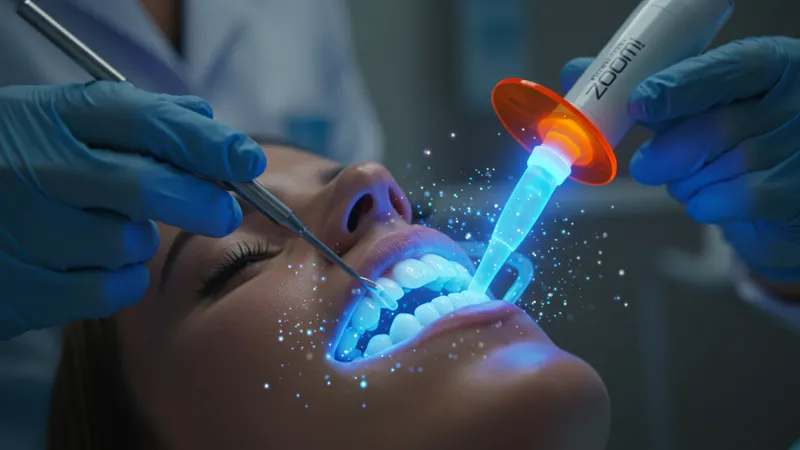
Zoom! Whitening, for example, amplifies this process using a proprietary light. The light serves to excite the peroxide molecules, accelerating stain breakdown and allowing for marked improvement in about 60–90 minutes. Patients who prefer a gentler approach might opt for Opalescence Boost, where the chemically activated gel works without any external light but is equally effective, especially for individuals with heightened tooth sensitivity.
The process is always controlled by a dental practitioner, who thoroughly examines the patient’s oral health before proceeding. This control minimizes side effects such as gum irritation or sensitivity, which may occur if stronger bleaches are misapplied. The practitioner also tailors the whitening agent’s concentration and application time for each individual, further improving the safety and predictability of the results.
In some cases, like with KöR Whitening, dentists combine in-office treatment with a custom-fitted take-home tray. This hybrid method extends the whitening process over days or weeks. By applying lower strength gel at home and a concentrated session in the office, patients achieve a seamless, bright smile suited for especially tough or aged stains. The science behind each step ensures consistent performance and predictable shade enhancement in American dental offices.
The typical patient journey with professional teeth whitening treatments in the United States begins with a detailed dental consultation. Dentists assess the patient’s enamel condition and existing dental work, explaining the possible outcomes and any risks. This comprehensive approach ensures that the treatment selected—whether Zoom! Whitening, Opalescence Boost, or KöR Whitening—will yield the best cosmetic enhancement based on the individual’s needs and oral health history.
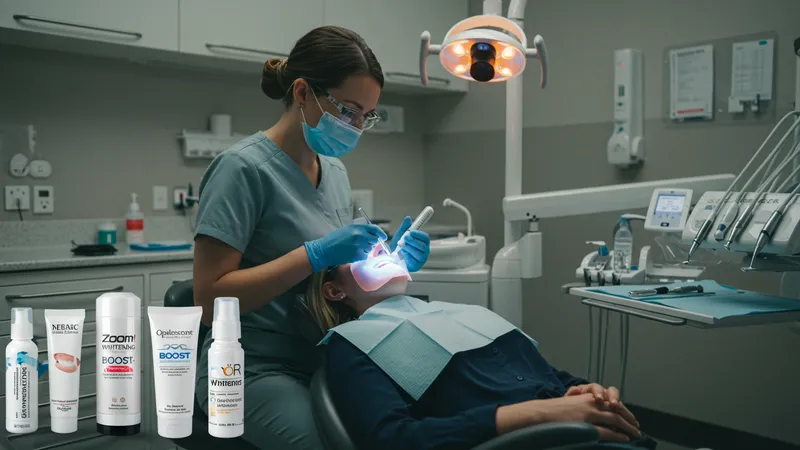
During appointments such as Zoom! Whitening, a protective barrier is first applied to the gums and lips to prevent any irritation from the bleaching agent. The whitening gel is spread over the teeth and activated with a specialized lamp. For Opalescence Boost, the dentist mixes the fresh chemical formula on-site and brushes it directly onto the teeth, repeating this process until the desired shade is reached. KöR Whitening sessions may include instructions for using custom take-home trays, maximizing results with minimal in-office appointments.
Patients often report improved confidence and satisfaction with their appearances right after these treatments. While mild sensitivity may occur just after a procedure, dentists often provide fluoride gels or recommend special toothpaste formulations to relieve discomfort. Post-treatment care instructions are standard in the United States and are critical for maintaining the results and ensuring the health of the treated teeth and gums.
Ultimately, the emphasis in the United States is on a safe and positive patient experience. Providers frequently check in with follow-up visits, making adjustments to aftercare as needed. Whether preparing for a milestone event or simply seeking a brighter everyday smile, American patients find reassurance in the professionalism and customization offered through in-office whitening systems.
One way U.S. patients compare treatments is by speed: Zoom! Whitening is known for delivering notable changes in tooth shade within a single, around 60-minute session. This makes it an attractive option for those with time constraints or looking for immediate results. In contrast, KöR Whitening’s extended approach—combining office and at-home steps—takes longer but excels with deeper stains caused by age or medication.
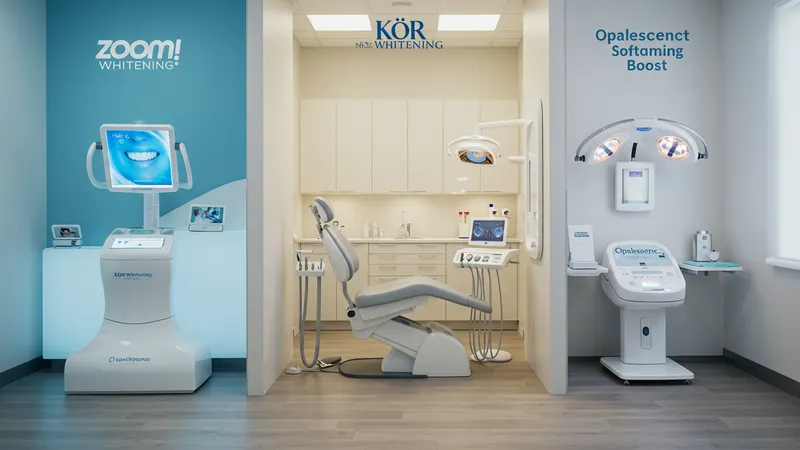
Sensitivity is another key distinction among U.S. whitening systems. Opalescence Boost is frequently recommended for sensitive teeth due to its gentle, chemically activated formula. This treatment forgoes external lights, which can sometimes heighten sensitivity issues but still provides dramatic color improvement. For patients with minimal discoloration or who are highly prone to discomfort, this method balances comfort and efficacy.
When considering treatment longevity, KöR Whitening stands out. Its dual approach and proprietary gels are designed to resist relapse, helping maintain results for years with proper care. Meanwhile, Zoom! and Opalescence Boost are effective for about six months to two years before touch-ups may be necessary. Regular dental checkups and mindful lifestyle choices extend the brilliance of the initial whitening.
Price and availability also influence decisions for Americans seeking whitening services. Professional options generally cost more than retail products but provide noticeably superior and predictable results. Many U.S. dental practices offer flexible payment plans and consultation sessions so that patients can choose what fits their budget without sacrificing quality or safety. This competitive landscape gives American consumers ample options to find their ideal whitening pathway.
Protecting professionally whitened teeth in the United States involves adopting a focused oral hygiene routine. American dentists frequently recommend brushing with non-abrasive, whitening-formulated toothpaste and avoiding food and drink known to stain, such as coffee, red wine, and certain fruits, especially in the first few days post-treatment. Consistent flossing and regular dental check-ups also play key roles in maintaining long-lasting results from treatments like Zoom! Whitening, Opalescence Boost, or KöR Whitening.
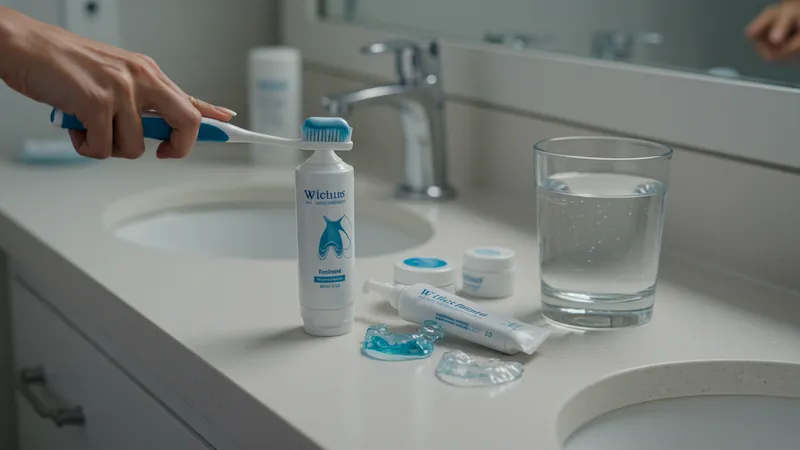
Touch-up treatments are common in U.S. practices, often scheduled every six months to a year, depending on each patient’s habits and enamel characteristics. Many providers, including those specializing in KöR Whitening, send patients home with custom trays and whitening gels for occasional reapplication. This at-home upkeep prolongs the effects and addresses new minor stains before they become established, ensuring continued brightness.
Patients are counseled on the importance of hydration and moderation. By drinking clear fluids and rinsing after consuming stain-prone foods or beverages, Americans can delay the reappearance of discoloration. Dentists also advise avoiding tobacco and using a straw for drinks with intense coloring agents. These strategies, when combined with professional touch-ups, have been shown to contribute to consistently radiant smiles across the country.
Professional whitening in the United States exemplifies how advanced dental care, customization, and strong aftercare protocols work together. This balance of technology and preventative strategies helps Americans enjoy their investment in a brighter smile—one that continues to stand out far beyond the dentist’s chair, thanks to careful, informed maintenance.